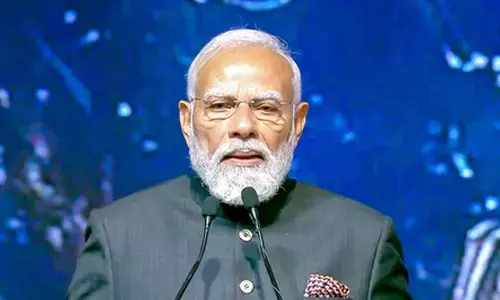Duty free sales critical to airport health

Duty free sales critical to airport health
The airport retail segment in India is expected to grow to $9.3 bn (about Rs66,000 cr) by 2030
In terms of duty free retail in India, the market size is estimated to be $ 0.7 billion and is set to grow to $2.4 billion by 2030. The airport retail segment in the country is expected to grow to $9.3 billion (about Rs 66,000 crore) by 2030.
Real estate opportunity for Indian airport operators is projected to be $1.6 billion (about Rs 11,350 crore) by 2030, global property consultancy Knight Frank said in its report on transit retail.
Indira Gandhi International Airport, New Delhi ranks first in the list of duty free revenue per passenger at $10-11 followed by Chhatrapati Shivaji Maharaj International Airport, Mumbai at $9-10 and Kempegowda International Airport Bengaluru at $5-6.
As per the study, globally, the popular duty free zones in airports like Singapore's Changi Airport, London's Heathrow Airport and Dubai International Airport have become destinations in themselves with their per passenger spend for duty free as high as $34 and $20 for Paris and Dubai airports respectively. As per this study, in India, non-aeronautical revenue from the Indira Gandhi International Airport is as high as 70 per cent of the gross revenue of which 34 per cent comes from retail, food and beverage and duty-free components.
The share of non-aeronautical revenue for Mumbai and Bengaluru airport stood at approximately 54 per cent and 49 per cent, respectively, the report said. For the airports managed by the Airports Authority of India, the share of non-aeronautical revenue stood at 13 per cent.
Non-aeronautical revenue has always very vital component to measure an airport's health and success. Airports are no longer mere transit hubs, but are emerging as retail destinations catering to the well-heeled consumer, and so the retail offering at the airport is slowly mirroring the offering of a city-centre.
According to the report, in case of key markets of Mumbai and Delhi, airport retail development garners revenue 2.4 times and 2 times that of successful malls in these markets, while it stands at 0.9 times in Bengaluru.
Major factors that are expected to boost the growth of the travel retail market in the forecast period are the upsurge in the travel and tourism sector that has increased the demand for apparels, cosmetics, food items, and electronic retail, rise in the urbanization and change in the lifestyle and the growing of the disposable income amongst the middle income groups. Furthermore, the development in the economic conditions, increase in the number of international travellers and the technological advancements are few of the factors further anticipated to propel the growth of the travel retail market in the timeline period.
The low customer interest in shopping at airports is expected to restrain the growth of the market at these stores, owing reasons, such as lack of promotion campaigns at these stores and high prices of products. Several companies are partnering with duty-free stores to launch their limited or exclusive products, which, is driving the market growth. By product type, the wines and spirits segment is expected to gain a major share during the forecast period.
Moreover, the rise in the number of millennial populations, the growing attention on the digitalizing of the retailing procedure and the increase in the demand for retail chains that provide luxury and premium brands of different products are some of the other factors further estimated to cushion the growth of the travel retail market in the coming years. However, the chaotic local markets, the stringent government guidelines and the little consumer interest in shopping at the airports are further projected to impede the growth of the travel retail market in the near future.
On the basis of product, the travel retail market is segmented into perfume and cosmetics, wine and spirit, electronics, luxury goods, food, confectionery and catering, tobacco, and others.
On the basis of distribution channel, the travel retail market is segmented into airport, cruise liner, railway station, and border, downtown, and hotel shop.
Asia Pacific dominates travel retail market due to the increasing of the middle-class population. Furthermore, the growing travel and tourism sector in the advancing countries. Additionally, the improved standard of living as a result of growing of the customer disposable income levels in the developing nations will further boost the growth of the travel retail market in the region during the forecast period.
















